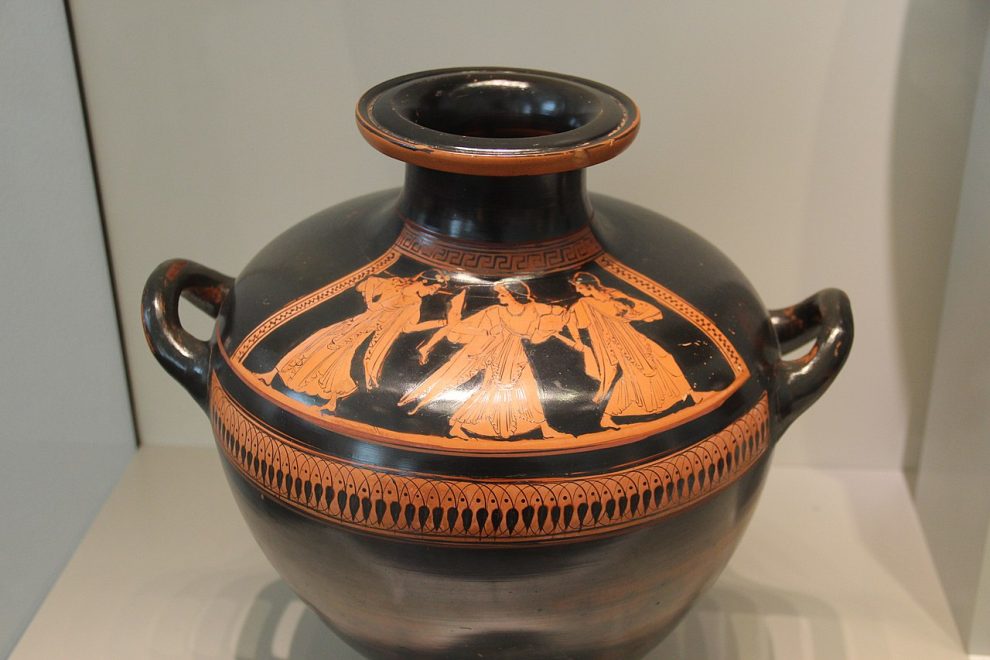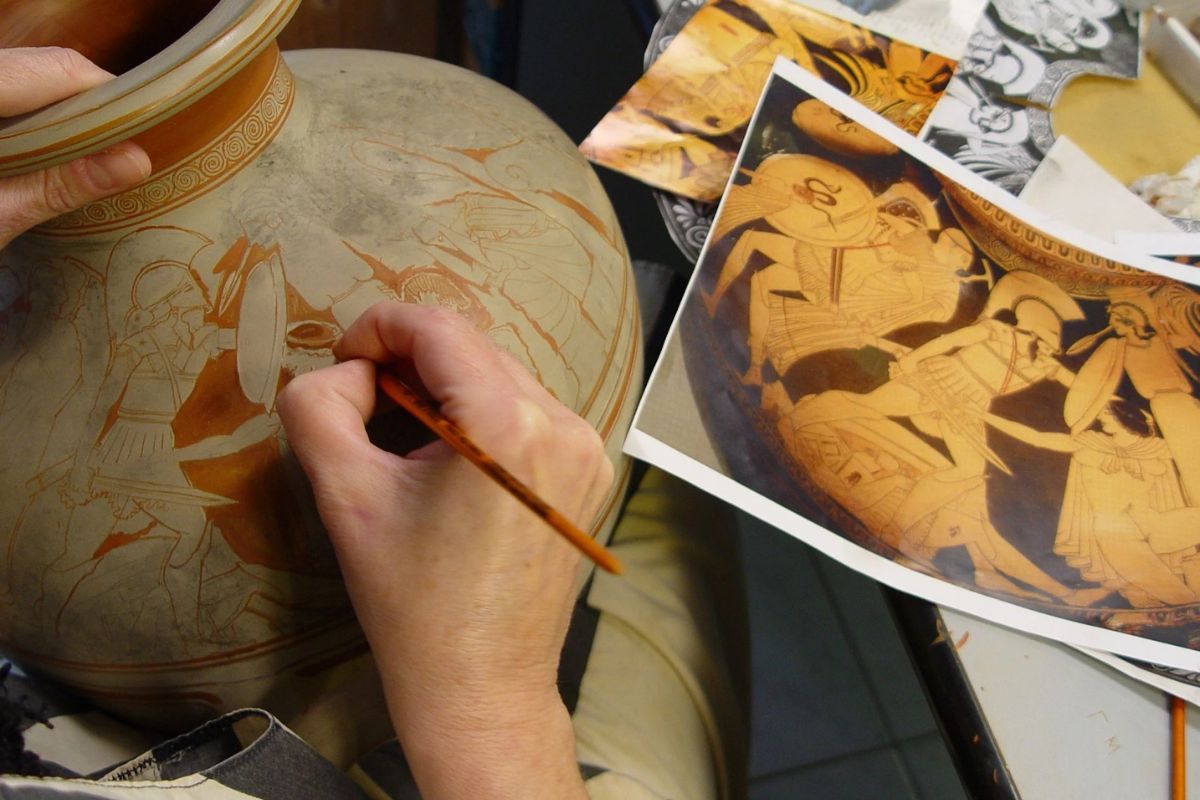
Key Highlights
- The hydria is a type of Greek pottery designed primarily for carrying and pouring water.
- Its most recognizable feature is its three handles: two horizontal for lifting and one vertical handle for pouring.
- These vessels, known as hydriai, offer a glimpse into ancient Greek culture through their painted decorations.
- Different styles developed over time, including the early black-figure hydria, the kalpis, and the Hadra hydria.
- Bronze hydriai were valuable items, sometimes used as prizes in competitions.
- You can see authentic examples in museums like the Metropolitan Museum of Art.
Step into ancient Greece. In this world, even simple things have great stories. The hydria was one of the most important jars from that time. People in Greece used it to carry water. Its shape was special. Artists saw the hydria as more than just a jar. They painted the hydria with scenes from greek life, myths, and traditions. This art helps us know more about how people lived back then. Today, the Art Institute and other museums show these amazing pieces. Many people now get to see and learn about ancient greece from these greek jars.
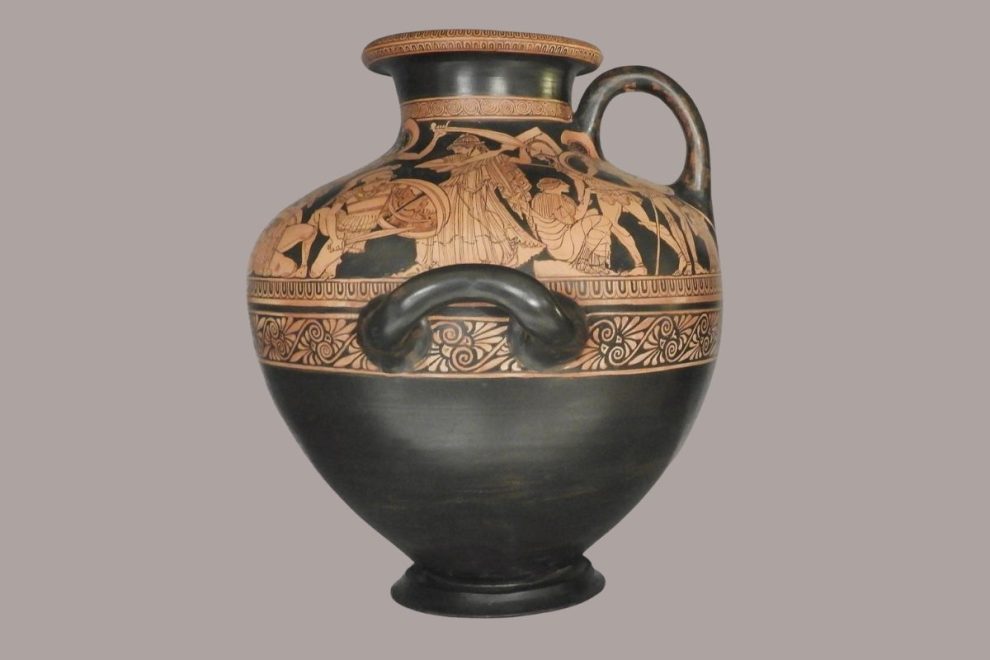
Recognizing the Hydria Vase in Ancient Greece
In ancient Greece, people saw the hydria vase almost every day. The shape of this vase made it easy to use when bringing water home. It was more than just something people used; the hydria vase was also a work of art. A lot of hydriai had beautiful designs. You could see pictures from greek mythology or daily life. If you look closely at a greek hydria vase, you will find out about what people in greece believed in and how they lived. The hydriai is special because it gives us a look at their world.
Defining “What is a Hydria” and Its Place Among Greek Pottery
A hydria is a type of vessel from ancient Greek times, made to hold and carry water. The word “hydria” comes from the Greek word for water. People in ancient Greece often used these pots. You could find them from around the 7th century BC until the Hellenistic period in the 3rd century BC. The main thing that sets the hydria apart from other greek pottery is its handle design.
It has three handles. This makes it easy to get water and pour it. In ancient greek houses, they used other pots for different jobs, but only the hydria had these three handles in this way, making it perfect for use with water. Potters made most hydriai out of terracotta clay and fired it in a kiln way to harden it. The simple function and shape make hydriai a well-known and special kind of ancient greek ceramic. Everyday, people needed water, so these pots became a part of homes, mixing useful design and classic style in ancient greece.
Visual Features That Set Greek Hydria Apart
The main thing that stands out about a hydria is that it has three handles. There are two horizontal handles on each side of the wide body of the vessel. People would use these handles to lift up the hydria, especially when they needed to carry it and it was filled with water. This made it easy to get a firm grip on it and move it from one place to another. The third handle is different. It is a vertical handle, found on the back of the hydria. This handle sits between the neck and the body of the vessel. People used the vertical handle when they wanted to pour water.
They could tip the hydria forward with the third handle and pour water into things like a krater bowl. The wide body and three well-placed handles let the hydria hold plenty of water, lift securely, and pour smoothly. The maker’s smart design shows in how they joined the handles to the body of the vessel. The whole design helped people get, carry, and pour water in a way that worked well for daily life.
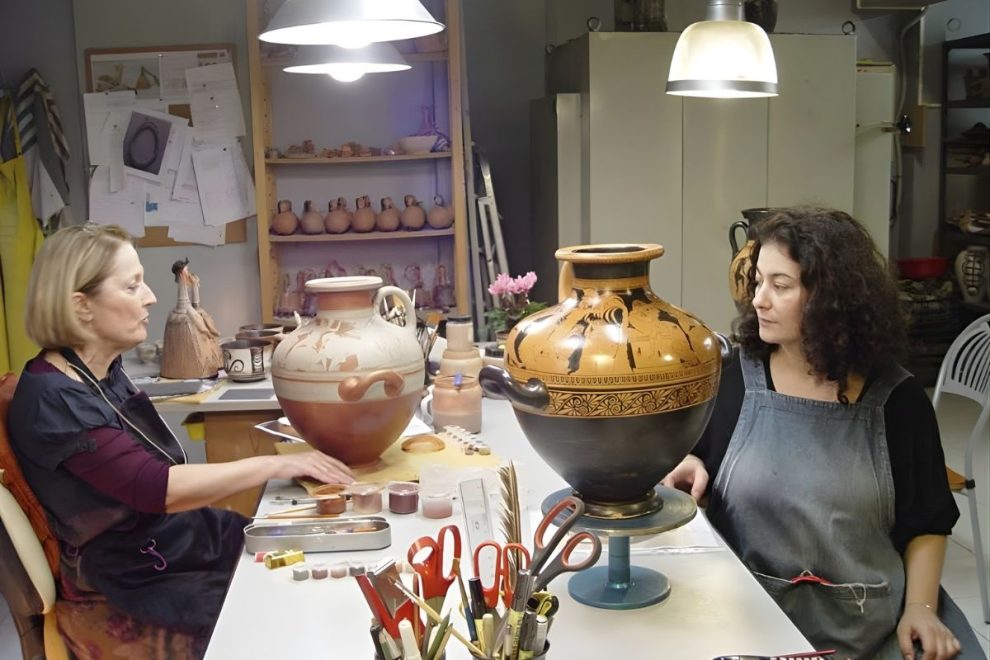
Types of Hydriai
As time went on, the look of hydriai changed. These changes showed new styles and needs that started in the 7th century BCE. The people who made these water jars changed their shape, size, and decoration during different times. The first hydriai did not look the same as the ones made later. Some hydriai were made from metal, not just clay. These bronze hydriai were worth a lot. Now, we will talk about some of the main kinds of hydriai that appeared during the years.
Early Hydria
The earliest type of hydria was used in the 6th century BC. It was a big vessel. You would see that it had a full oval body. The shape also gave it broad, round shoulders. These shoulders were set apart from the neck. This design made the vessel look strong and sturdy. Early hydriai are linked with black-figure pottery. Artists put a slip onto these vessels. When fired, that slip became glossy black paint. They used it to paint figures and scenes right on the red clay.
This style was common in the Archaic period of greek pottery. Every hydriai like this one had three handles. The handles made it easy to carry and pour out what was in the vessel. Its oval body, black paint decoration, and strong design set it apart from other greek pottery. You can also see how it was not like the newer hydria styles. Most of these vessels were between 33 cm and 50 cm tall.
Kalpis
In the 5th century BC, people in classical Athens started to like a new type of water jar called the kalpis. The kalpis was different from the older hydria. It had a body, shoulder, and neck that made one smooth curve together. This gave it a nice flowing look. The kalpis was often used by red-figure painters in Athens. Artists painted the background black and kept the figures the red color of the clay. They added fine details by using thin black lines. There was a smaller version of this jar called a hydriske. The kalpis was usually smaller than the first hydria jars. It was from 25 cm to 42 cm tall. Its new shape and use in red-figure painting show how styles in hydriai changed over time. The art went from black-figure to this new, more detailed way.
Hadra Hydria
The Hadra hydria started in the Hellenistic period. This was in the late 4th century BC. The style gets the name from Hadra, which is a suburb in Alexandria, Egypt. Most of the first finds of this kind came from there. The Hadra hydria be easy to tell apart. They have a wide and squat neck. They also have a low base that flares out. People decorated the Hadra hydriai in two main ways.
One group got a thick coat of whitewash. That whitewash worked as a base for decoration with many colors. Artisans mainly made this kind in Egypt and used many of them in tombs. Potters in Crete, a region also known for its early minoan pottery, crafted the other type, called “Clay Ground.” They did not use whitewash. Artists would put decoration with dark brown or black paint right onto the clay. The difference in decoration shows how people in different regions had their own way of making things look good in that time.
Bronze Hydria
Bronze hydriai started to appear in the 4th century BC. These were very valuable vessels. They are made from bronze, which is a mix of copper and tin. The jars had a shiny look because people would polish them until they were bright. Some of the hydriai even had silver decoration. These bronze hydriai were made in a different way from clay ones. People hammered the main part from sheets of bronze.
Functional Uses of Hydria Pottery
The hydria was a special pottery used mainly to carry water in ancient Greece. This task was important for people every day. But that was not the only thing the hydria was used for. The different ways people used this vessel show how useful and important it was in Greek life. The hydria was used not only for daily chores but also in events and other roles in Greece. People used it in ceremonies and for civic work too. By looking at what the hydria did in the past, we get a clearer view of life in ancient greece. Here are the main ways this greek pottery was used, beginning with its key job.
Carrying and Pouring Water
The hydria was made mainly to help collect and carry water. People would take this pot, often women, to the local fountain or well to fill it. There was a wide mouth on top, to make filling easier. The body of the vessel was large so it could hold quite a lot of water. Once it was full, there were two horizontal handles on the sides. You could use these to get a good grip and lift the heavy pot to carry home.
Back in the 5th century BC, potters even made the shoulders of the hydria flatter to help with carrying. When you wanted to use the water, the vertical handle at the back was helpful. This handle let you pour the water carefully, whether you were filling up cups, washing, or using it to dilute wine in a krater or serve wine with a kantharos. The whole shape of the hydria was designed to make working with water easy, from filling to pouring.
Roles Beyond Water Transport: Weddings, Funerals, and More
The hydria was used for more than just carrying water. One of its most important other uses was as a funerary urn. People especially used the Hadra hydria to keep the ashes of the dead. They inscribed these urns with the person’s name and burial date. Bronze hydriai had another role too. They were given as valuable prizes in sports tournaments and matches. Pictures on other greek vases show winners holding a hydria as their prize. Because of their worth, hydriai were also given to sanctuaries as special gifts. This handy vessel was part of ancient greek culture in other ways as well. People could use a hydria to hold oil or to collect votes from judges. The decoration on hydriai could show what they were for. For example, some hydriai with love themes were given to important figures, like brides.
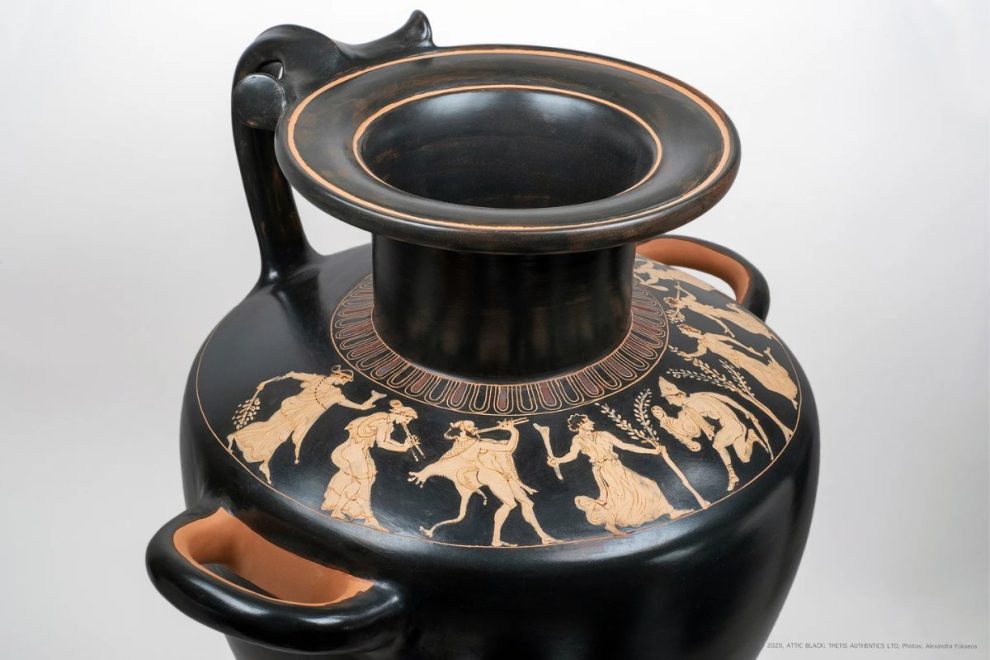
Manufacturing a Hydria
Making a hydria takes a few steps and careful work. The main part is made wide so it can hold more. The neck and mouth are shaped to help with pouring and holding. Joining each section needs skill to keep it steady and looking good. Spinning it on a potter’s wheel gives it smooth surfaces. The bottom part helps it stay balanced. The handles can be straight up or sideways. This design shows what was important in ancient Greek culture and shows the art of greek people.
Parting Thoughts
The hydria shows how use and art worked together in the ancient world. It was more than a water jug. The people used it every day in ancient Greek culture. It had a role in ceremonies, but it also looked nice. The design changed over time. Its decorations showed scenes from Athens, Crete, and Egypt. To look at a hydria is to look into the lives of people from long ago and see what they valued in ancient Greek life.

